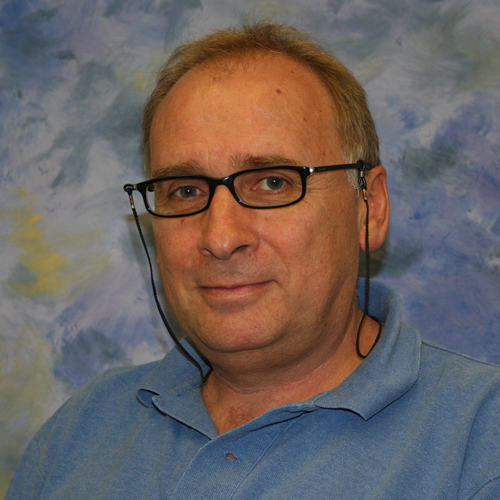 |
Aldo Bonasera Website Senior Research Scientist Cyclotron Institute, Texas A&M University Measuring Fusion Cross Sections in Plasmas We presented for the first time a new and general method for measuring the astrophysical S factor of nuclear reactions in laser-induced plasmas and we applied it to 2H(d,n), 3He and 3He(d,p)α. The experiment was performed with the Texas Petawatt Laser, which delivered 150–270 fs pulses of energy ranging from 90 to 180 J to D2 or CD4 molecular clusters. We used scintillators to detect the 14.7 MeV proton coming from the fusion reaction. In more recent experiments we improved the technique to measure the plasma ion distribution and measured hard γ (less than 5 MeV) coming from the plasma. We prepared the CD4 cluster gas at the critical point of the liquid gas phase transition and let it expand in vacuum. We measured the range of the ions in the cold and hot regions of the plasma and the number of neutrons produced. We found that the initial correlations in the gas due to the phase transition influence the range and the number of fusions. We saw a good agreement with predictions using the Fisher’s model of 2nd order phase transitions. In these experiments the plasma is at relatively low density (of the order of 1018 cm-3) and the laser does not compress it. We have performed other experiments at SGII-Shanghi, China compressing solid CD2 target by means of 8 laser beams (Elaser about 16 kJ in 3 ns) in cylindrical symmetry. Different methods to measure the plasma ion distributions and the fusion reactions were used. From a preliminary analysis we found that the system gets compressed about 4000 times its initial value but the plasma temperature at maximum compression is rather low, of the order of 1 keV. The range seems to be orders of magnitude larger than predictions using SRIM. The final goal is to be able to measure the fusion cross sections in such extreme conditiimproving the detecting system. Constrained Molecular Dynamics (CoMD) Model Microscopic dynamical models such as the Constrained Molecular Dynamics (CoMD) model have been very successful in describing a large amount of data in fragmentation, fusion, fission and more recently in charge-exchange reactions. However, this approach and similar ones, fail in reproducing binding energies and other properties of light nuclei. Some aspect of clusterization and the possibility of Bose Einstein Condensation in nuclear dynamics are also not well described in the model. As a result the yield of α-particles in fragmentation reactions is underestimated and the binding energies of neutron rich (poor) nuclei are not well described in the model. The approach uses a Skyrme type force, which includes the symmetry energy term and a simplified three body potential. Pauli blocking is enforced as a constraint, which helps in saving CPU time while preserving general features of Fermions. In a recent version of CoMD we have implemented a second constraint to take into account the Heisenberg principle as well. Bosonic effects have also been included in the collision term for d-d and α-α collisions. We plan to introduce realistic three body forces (including Efimo-type potentials) and (i)spin-(i)spin interaction to reproduce the binding energies of d, t, 3He and α particles which were poorly described in the original model. We are also in the process of introducing 1s type forces. The requirement for the new forces is not just to reproduce properties of finite nuclei but also properties of nuclear (neutron) matter. These aspects are experimentally studied at Texas A&M. A strong collaboration with experimentalists has been fruitful in the past and we plan to keep this tradition going. Aspects of the competition between Fermionic and Bosonic degrees of freedom will be pursued. The production of superheavy nuclei and fission is also of interest as in previous works. |
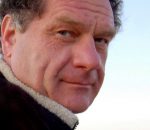 |
Aurel Bulgac Website Professor of Physics University of Washington, Seattle Dr. Bulgac studies static and non-equilibrium dynamics of quantum many-body systems, typically strongly interacting fermions. Physical systems include atomic nuclei, the crust of neutron star crust, cold atom systems. Physical phenomena range from ground and excited state properties of such systems, energy density functionals, equation of state, thermodynamic properties, nuclear reactions, real-time fission dynamics, quantized vortices, their generation and their dynamics, incipient stages of quantum turbulence in fermionic superfluids. He develops and uses static and time-dependent density functional theory extended to fermionic superfluids, quantum Monte Carlo methods and other theoretical approaches, as well as their numerical implementation. Numerical calculations are performed typically on leading edge supercomputers, such a Summit (#1 on TOP 500) and Titan (#9 on TOP 500) at ORNL, Piz Daint (#5 on TOP 500), at Swiss national Supercomputer Center, Lugano, Switzerland, and Tsubame at Tokyo Institute of Technology, Japan. His group uses GPUs programmed with CUDA on these supercomputers in order to perform calculations on these supercomputers as close as possible to their peak capabilities. Many details can be inferred from his publication list and personal web page, where one can find links to talks, many videos, codes, and other pertinent information. |
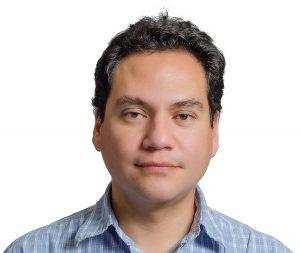 |
Sergio Almaraz-Calderon Website Assistant Professor of Physics Florida State University Dr.Calderon's research focuses on the study of nuclear interactions and how they influence astrophysical processes. His research interests include nuclear structure, nuclear reactions, nuclear astrophysics, stable and radioactive ion beams, and detector development. |
 |
Greg Christian Website Assistant Professor Department of Physics & Astronomy, Texas A&M University Radioactive capture reactions–(p, γ), (n, γ), and (α, γ)–are important both for understanding nucleosynthesis in stellar environments and for national security. For many important reactions, the target nucleus is short lived. This makes direct measurements of the reaction rates extremely challenging, and in many cases impossible. As a result, indirect techniques must be used to understand the rates of these reactions experimentally. In this project, nucleon transfer reactions such as (d, p), (6Li, d), and (p, t) are used to populate and study the specific resonant states through which important radiative capture reactions proceed. In the experiments, a large-area, position-sensitive silicon detector array is combined with the MDM magnetic spectrometer and gamma-ray detectors to measure the spins, spectroscopic strengths, and branching ratios of these resonant states. From these measurements, theoretical techniques are used to indirectly determine the rate of the radiative capture reaction of interest and, in turn, to improve understanding of the nucleosynthesis or national security topic of interest. Improved technologies for detecting fast neutrons are important both for improving understanding of a variety of topics in basic and applied nuclear science. These include nuclear structure away from stability, nuclear astrophysics, measurements of prompt fission neutron cross sections, and detection of hidden WMDs. Current fast neutron detectors based on plastic or liquid scintillators are limited in both position and energy resolution, which in turn affects the quality of experiments for basic and applied nuclear science. This project will explore methods of improving the position sensitivity of fast neutron detectors by coupling plastic scintillators to pixelated photon detectors – SiPMs or PMTs. Analysis of the distribution of scintillation light at the various pixels will be used to triangulate the source of the light, and thus the neutron interaction point. In particular, techniques from the medical imaging community will be applied to fast neutron detection for the first time, with the promise to improve position sensitivity of fast neutron detectors to 1 cm or better, without a significant loss in timing/energy resolution, or in efficiency. |
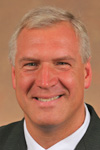 |
Paul Cottle Website Professor of Physics Florida State University Paul Cottle is a professor of physics at Florida State University whose research field is experimental nuclear structure physics. He earned his Ph.D. in physics from Yale in 1986 and joined the Physics Department faculty at Florida State University that same year as an Assistant Professor. Cottle received the Presidential Young Investigator Award in 1987 and became a full professor in 1994. Cottle was elected to the chair line of the American Physical Society Forum on Education in 2011 and served as Forum chair in 2013. He was also a member of the society’s Committee on Education from 2012 to 2014, serving as chair 2013-2014. He was elected a Fellow of the APS by the Forum on Education in 2012. Cottle continues to perform experimental nuclear structure research both at FSU’s Fox Superconducting Accelerator Laboratory and at the National Superconducting Cyclotron Laboratory. Cottle is also working to improve the preparation of Florida’s high school students for college majors in fields like engineering, computer science and physics. He has collaborated with teachers, counselors and school district staff and board members in Bay, Monroe and Orange Counties in Florida. In Bay County (which includes Panama City), the number of high school students taking physics has increased by a factor of five since 2015. As part of his work in Bay County, Cottle helps organize a CENTAUR-funded nuclear science summer camp for middle and high school students. |
 |
Jeremy Holt Website Assistant Professor of Physics Texas A&M University Microscopic nuclear structure and reaction theory has undergone a major transformation in the last decade with the development of chiral effective field theory, the low-energy realization of quantum chromodynamics. My research program utilizes "next-to-first principles" chiral two- and three-body forces to derive nucleon single-particle properties (momentum- and density-dependent isoscalar and isovector optical potentials, effective masses, and spectral functions) in order to improve modeling of neutron-capture reaction rates in r-process nucleosynthesis and particle transport in experimental heavy-ion collisions. |
 |
Miguel Madurga Website Assistant Professor of Physics, University of Tennessee Knoxville Dr. Miguel Madurga research interest lies in the nuclear properties of nuclei with extreme neutron-proton imbalances. The atomic nucleus offers a unique problem in fundamental physics, being the smallest system self- bound by the strong force. In the field of low energy nuclear physics we explore the properties nuclear force between nucleons. The strong dependency of the nuclear force to the exact composition of neutron and protons observationally supports it being an effective (or dressed) interaction derived from the strong force. By studying the nuclear structure of light neutron rich nuclei close to the neutron drip line, at the most extreme neutron to proton ratios we can therefore study the nuclear interaction in the most “demanding” conditions. In Dr. Madurga’s most recent work: the decay to quasi-single particle states in 133Sn was investigated; the presence of isomeric states in neutron rich Mg isotopes was used to deduce the limits of the N=20 and N=28 islands of inversion. |
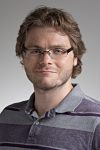 |
Scott Marley Website Assistant Professor of Physics Louisiana State University Prof. Marley is an experimental nuclear physicist interested the structure and decay properties of unstable atomic nuclei. Joined by a CENTAUR-supported graduate student, Marley will use transfer reaction experiments to study the structure of light-mass isotopes at the limits of β-stability. The group aims to improve knowledge of trends in the structure of light nuclei moving toward less bound systems and to test the most modern theoretical approaches to the nuclear many-body problem. |
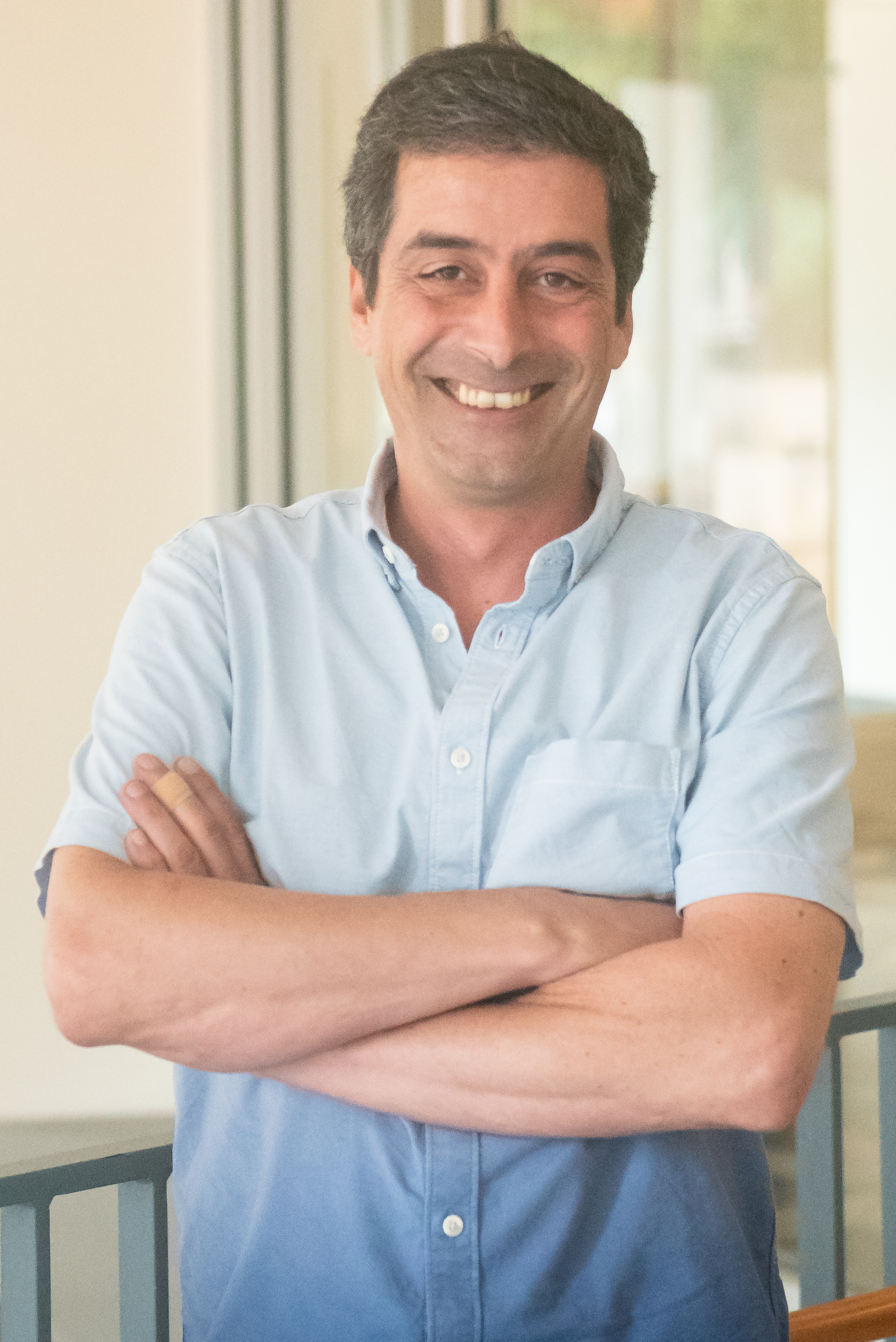 |
Dan Melconian Website Associate Professor of Physics Texas A&M University, College Station Precision measurements of the decays of radioactive nuclei produced by the cyclotrons are a powerful probe of the fundamental forces governing our universe. Using elegant techniques in "table-top" experiments both locally at the Cyclotron Institute as well as at other laboratories, our group aims to complement the efforts of our colleagues at larger facilities (such as the Large Hadron Collider) to search for physics beyond our current understanding as encapsulated in the Standard Model of particle physics. Some of the main projects being pursued include measuring decay properties of unstable nuclei (lifetimes, branching ratios and masses) and angular distributions of the decay products of atoms and ions confined in magneto-optical and Penning traps. Our main endeavour within CENTAUR, with collaborators from Lawrence Livermore and Argonne National Laboratories, aims to improve our knowledge of how many fissions occur in a chain reaction. In particular, the fission products 147Nd and 156Eu (along with other long-lived isotopes) play a crucial role in science-based stockpile stewardship and nuclear forensics. The uncertainties on the γ-branching ratios measured for these isotopes currently compromise the usefulness of the existing data, which is what we are working to remedy. The γ-ray branching ratios of 147Nd and 156Eu are known to only 8%, hence leading to an 8% uncertainty in the fission-chain yield. The absolute γ-ray branching ratios for 147Nd and 156Eu are needed to 1–2% precision for national-security applications and to greatly improve the precision and reliability with which the number of fissions can be determined. |
 |
Ralf Rapp Website Professor of Physics Texas A&M University Photons emitted in heavy-ion collisions are particularly valuable probes to study the properties of the strongly interacting matter formed in heavy-ion collisions: once produced, they can escape the nuclear fireball without rescattering and thus probe its inner hot and dense regions. We will first compute the thermal photon emission rates for the temperatures and densities relevant for heavy-ion collisions in the Fermi energy regime. We will then implement these rates into transport calculations for the evolution of the fireball, by extracting local temperatures and densities. The calculated spectra will be compared to experiments to deduce the temperatures and densities reached in these reactions, and how the matter properties change as its isospin concentration is varied. |
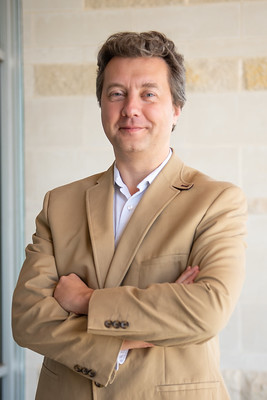 |
Grigory Rogachev Website Department of Physics & Astronomy, Texas A&M UniversityGrigory Rogachev is specializing in low energy experimental nuclear physics and nuclear astrophysics. He is doing research related to structure of light and medium mass nuclei, in particular structure of exotic neutron-rich and neutron-deficient isotopes, clustering phenomena in nuclei, mechanisms of nuclear reactions, applications of nuclear physics methods for determining rates of nuclear reactions that drive nucleosynthesis and energy generation in stellar environment. Grigory Rogachev graduated from Moscow Engineering Physics Institute (State University) in 1996 with Master of Science degree in Experimental Nuclear Physics. From 1996 to 1999 Grigory Rogachev was a Research Assistant at the National Research Center "Kurchatov Institute" where he received his Ph.D. degree in 1999. From 2000 to 2004 he was associated with the University of Notre Dame, first as a Ph.D. Research Associate and later as a Research Assistant Professor (2003-2004). In summer of 2004 Grigory Rogachev joined Department of Physics at Florida State University as an Assistant Professor. In 2010 he was tenured and promoted to an Associate Professor. In summer of 2013 he joined faculty at the Department of Physics and Astronomy and Cyclotron Institute at Texas A&M University. |
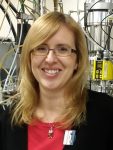 |
Anna Simon Website Associate Professor University of Notre Dame Stellar nucleosynthesis processes involve thousands of reactions for which the cross sections need to be described using theoretical models. For a wide variety of processes, e.g. p-, s- and r-process the nucleosynthesis path runs through heavy nuclei, thus statistical Hauser-Feshbach (HF) models can be applied to describe the cross sections. HF models requires as input, among others, g-strength (gSF) and level density (LD) functions, and optical model potential (OMP). A wide variety of models that describe these quantities (see e.g. TALYS code), results in cross sections predictions that can vary even by an order of magnitude, resulting in large uncertainties in network calculations of the nucleosynthesis processes.The Oslo method provides a well-established tool to extract the gSF and LD from experimental data. Such measurements allow for constraining the inputs for the HF models and as a result minimize the uncertainties in the network calculations. The Oslo-type experiments require simultaneous measurement of the γ rays and the excitation energy of the produced nucleus. This is typically done using scintillator detectors and particle telescopes. The Oslo-type experiments have shown that the gSF exhibits an unanticipated behavior at lower energies: the so-called upbend. This feature has been shown to exist in nuclei as heavy as 138La. However, the scintillators do not allow for extraction of the gSF below 1 MeV. Thus, for heavier nuclei, where the upbend shifts towards lower gamma-ray energies, the results from experiments using scintillator detectors are inconclusive, as they do not probe the gSF far enough.The STARLiTeR/HYPERION array at the Cyclotron Institute of Texas A&M University provides a unique environment to perform Oslo-type experiments using Compton suppressed clover detectors combined with a DE-E telescope. The Compton suppression of the gamma-detectors is a key to extending the lower limit of the gSF measurements even to 0.5 MeV, which unravels the features that could not be observed during traditional Oslo-type experiments. A recent experiment performed using the STARLiTeR array for 152,154Sm(p,d)151,153Sm revealed an upbend in the heaviest investigated nucleus so far. |

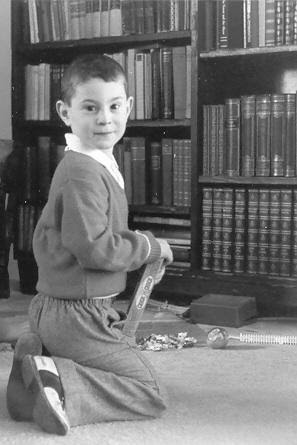 |
Lee Sobotka Website Professor of Chemistry and PhysicsDr. Sobotka’s received his Ph.D. from the university of California-Berkeley in 1982 and joined the faculty at Washington University in 1984 and has remained there ever since as a professor of both chemistry and physics. His research interests include: the deexcitation modes of highly excited or exotic nuclei; the continuum structure of light nuclei; dynamics of nuclear fusion and fission; the asymmetry dependence nucleon correlations inside of nuclei; the asymmetry dependence of the equation of state of nuclear matter; advanced radiation detectors and associated electronics including ASIC design. He has worked at over 20 different accelerator or reactor laboratories. Early in his career he won a Presidential Young investigator Award and has since won the Glenn Seaborg Award for Nuclear Chemistry from the ACS and he is a fellow of the APS. |
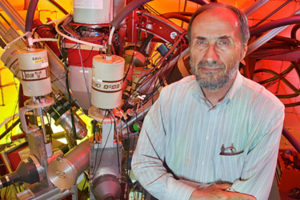 |
Sam Tabor Website Professor of Physics, Florida State UniversitySamuel Tabor is the Norman P. Heydenberg Professor of Physics at Florida State University. His research field is Experimental Nuclear Physics. He is a Fellow of the American Physical Society and was awarded the APS Division of Nuclear Physics mentoring award for 2019. He has directed the research of 24 Ph.D. graduates. His research projects have included nuclear size measurements, heavy-ion fusion, heavy-ion induced fission, and many aspects of nuclear structure, including high-spin sequences and rotational bands, cross-shell excitations, giant resonances, and the interplay with nuclear structure models. |
 |
Ingo Wiedenhöver Website Professor of Physics, Florida State University Director, John D. Fox Accelerator LaboratoryIngo Wiedenhöver received his Ph.D. from the Universität zu Köln (Germany) in 1995, in the field of experimental nuclear physics. He worked as a Postdoctoral researcher at Argonne National Laboratory and a Research Assistant Professor at the National Superconducting Cyclotron Laboratory of Michigan State University. In 2001 he joined the faculty at the Physics Department of Florida State University, where he is now a full Professor. He received an “Outstanding Junior Investigator” award with the U.S. Department of Energy in 2002. He has been the director of the John D. Fox accelerator laboratory at FSU since 2017. His research is focused on the structure of exotic nuclei and nuclear astrophysics, performing experiments at National Laboratories and at FSU. He developed the in-flight exotic beam facility RESOLUT at the John D. Fox laboratory, which is used for research in Nuclear Astrophysics. He also works on improving the experimental methods for such experiments, in particular with the active-target detector ANASEN and neutron-detectors. He has also re-commissioned the Super-Enge Split-Pole spectrograph for high-resolution particle spectroscopy at the FSU laboratory. He has supervised the research of ten Ph.D. graduates. |
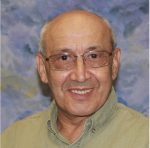 |
Akram Zhanov Website Senior Research Scientist in Physics Texas A&M University Akram Zhanov is a senior scientist at the Texas A&M University Cyclotron Institute. His research focuses on advancing theory of low-energy nuclear reactions, neutron and proton radiative capture reactions, indirect methods in nuclear astrophysics, stellar nucleosynthesis, and few-body systems. |